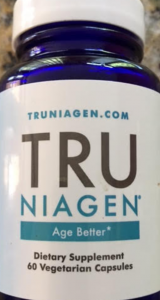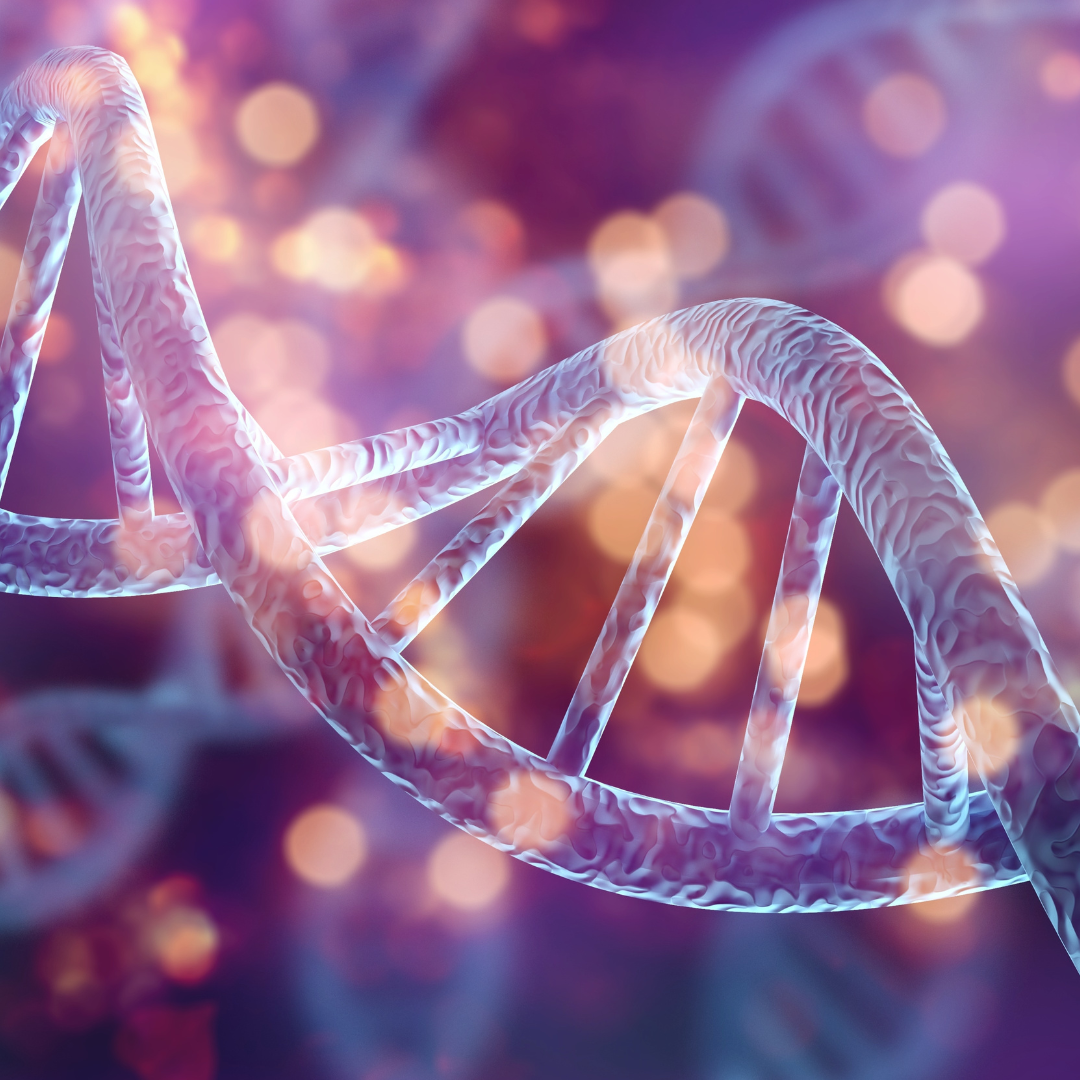I received this email: hey Joe, I want to raise my NAD levels, but I don't want to take supplements like NMN or nicotinamide riboside because they are expensive. What do you suggest? Raising NAD (nicotinamide adenine dinucleotide) is quite popular with those who want to attempt to slow their aging process. While many achieve this through supplements such as NMN (nicotinamide mononucleotide) and nicotinamide riboside (NR), I believe there's a superior, more natural approach.
What is NAD?
So, if you're unfamiliar with NAD, it stands for nicotinamide adenine dinucleotide. Technically called a coenzyme, NAD plays a vital role in many cellular health functions, including energy production, DNA repair, and cell signaling.
Important Functions of NAD
- Cellular energy production
- DNA repair
- Activation of sirtuins (anti-aging enzymes)
- Maintaining a healthy balance of free radicals and antioxidants (Redox Balance)
- Cellular signaling
- Mitochondria biogenesis
- Immune system response to pathogens
- Learning and memory
We tend to make less NAD as we get older. This has led to speculation that declines in NAD may play a role in the aging process. Because of this, artificially raising NAD through supplements like nicotinamide riboside and NMN has become popular with anti-aging biohackers who want to try to prolong their maximal lifespan.
Supplements That Elevate NAD Levels
NMN & NR

The most widely known supplements to achieve this are NMN and nicotinamide riboside (NR) sold under the brand name TruNiagen. While nicotinamide mononucleotide (NMN) remains highly favored, particularly because of Dr. David Sinclair, it's essential to note that NMN needs conversion into nicotinamide riboside before gaining entry into cells.
This doesn't necessarily mean that nicotinamide riboside is better. Unfortunately, there seem to be few NMN vs. NR clinical trials that would help consumers figure out which is better.
However, both NMN and NR will raise NAD levels. And while both are widely available to purchase, you may not be able to find NMN on Amazon due to the warnings of the FDA banning that supplement.
Fortunately, you have other alternatives.
Lesser Known NAD Boosting Supplements
Though not as widely recognized, various dietary supplements have demonstrated the ability to enhance cellular NAD concentration. For example, the body can transform the amino acid tryptophan into NAD. Vitamin D, resveratrol, and various B complex vitamins have also been shown to boost productino. See this video for some of the lesser-known mitochondrial health supplements and foods shown to boost cellular health.
The best-known vitamin to improve mitochondrial health is vitamin B3, also known as niacin. The downside of niacin, however, is that too much can trigger the “niacin flush,” which results in rash, feelings of warmth, and sometimes an itchy feeling.
The niacin flush often shows up about 15 minutes after ingestion and usually lasts 30-45 minutes. While this adverse reaction is harmless, high doses of niacin can have other, more severe side effects, such as rising blood sugar and damaging the liver. Because of this, some opt for the alternative form – niacinamide – which can also raise NAD in cells.
What Is NAMPT & Why It's Important For Longevity?
We can't talk about boosting nicotinamide adenine dinucleotide without mentioning intracellular NAMPT. NAMPT (nicotinamide phosphoribosyltransferase) is the rate-limiting enzyme in cells necessary for NAD production. In other words, this is the enzyme that drives the production of NAD in skeletal muscle cells.
Here it is in simple terms:
- As the NAMPT enzyme increases, NAD levels rise.
- As NAMPT levels fall, so does NAD production.
Protip: Notice we are talking about intracellular NAMPT. This is the enzyme form that drives forward NAD production. We are not discussing the more damaging form, called extracellular NAMPT, which does not participate in NAD synthesis. Some believe that this form can contribute to cancer development by increasing inflammation.
NAMPT In Younger & Older People
Studies suggest younger people have higher NAMPT enzyme levels than older folks. Some research suggests those in their 20s have about 70% higher levels of NAMPT than those in their 70s.
One reason for this aging-related decline may be that older folks are less active. This begs the question, can exercise level up this critical NAMPT enzyme? If yes, it might mean physical activity can naturally boost NAD synthesis.
So what is the proof?
A Natural Way to Raise NAMPT In Muscle Cells
In one review, researchers analyzed five studies involving exercise and the NAMPT enzyme. The conclusion was that participation in moderate-intensity physical activity resulted in significantly higher levels of intracellular NAMPT inside skeletal muscles.
In general, those who exercised regularly had over a 70% chance of having significantly higher NAMPT levels in their skeletal muscles than those who did not exercise.
And those who exercised regularly had about 50% higher intracellular NAMPT levels than non-exercisers.
So far, research doesn't highlight any specific kind of physical activity that's better than another. What we do know is that individuals engaging in aerobic-type exercise had approximately a 70% higher likelihood of having elevated NAMPT levels. Those who regularly performed strength training had about a 66% higher probability of having greater amounts of NAMPT.
Does Exercise Raise NAD?
Boosting NAMPT levels is one thing, but does that translate into higher NAD levels, too? Several studies reveal it does. Some propose a connection between higher NAD levels in skeletal muscles and the promotion of healthy aging and muscle function. In other words, the greater the abundance of NAD in muscles, the better those muscles function. This may reduce the possibility of frailty and sarcopenia.
In this study, exercise was shown to protect against the age-associated decline in skeletal muscle NAD levels.
In another clinical trial, exercise was shown to reverse the age-related decline in NAD in human skeletal muscles. In other words, physical activity raises this longevity molecule in seniors.
What Is Moderate Exercise?
Most studies showing exercise enhances NAMPT and NAD involve participation in moderate-intensity exercise training. So, what is moderate intensity? One definition is whether you can talk with another person during physical activity; if yes, that is good and is one definition of moderate-intensity exercise.
Another way to figure this out is to use the ratings of the perceived exertion scale (RPE Scale), also called the Borg Scale. This is a scale from zero to 10 where a rating of zero is so easy you can do it all day. Conversely, a rating of 10 is the most challenging exercise you can withstand, resulting in your cessation after a few seconds.
If you're using the RPE scale, moderate-intensity exercise has a rating of 3. The beauty of the RPE scale is that it can be used to gauge how difficult aerobic and strength training is. It's very versatile.
If you want the best overall NAMPT & NAD boosting effect, combine aerobic and strength training in your exercise training program. This will give you the most broad spectrum protection against aging-related declines.
Aging & NAD: Chicken Or The Egg?
Aging is associated with lower cellular NAD levels. Does this mean reductions in this molecule are the cause of aging? Or is it possible that the aging process itself is the cause of lower NAD? Alternatively, is it possible that the declines are due to less physical activity that tends to occur as we grow older? To be sure, this is a complex affair because if the aging process was simple, we would have cracked that nut by now.
What Does This Mean?
While augmenting cellular NAD by popping a supplement like NMN, nicotinamide, riboside, niacin, and others is easy, they will incur a monetary cost. On the other hand, exercise is free. Longevity biohackers genuinely keen on extending their lifespan should incorporate regular exercise into their anti-aging routines.
What Do You Think?

Joe, thank you for the knowledge you share. I read your reviews whenever I receive an email and appreciate your expertise as I am a layman and use your input to help me make better decisions.
I am confused by the ChromaDex product Tru Niagen NAD+ versus the Elysium Health product Basis NAD+ versus Timeline Company product Mitopure Urolithin A versus the much less expensive GlyNac supplement you presented. If money is no object, is one of these a better approach than the others to age well? I believe the first two and GlyNac are basically the same but any light you can shed on this topic and confusion would be greatly appreciated.
Hi Stewart, So TruNiagen is the nicotinamide riboside supplement. Nicotinamide riboside is a form of niacin (vitamin B3)
Elysium Basis is a combination of nicotinamide ribose and another ingredient called pterostilbene. Pterostilbene is a resveratrol-like compound.
Here are my reviews on elysum: Elysium Basis review and Elysium Basis and ALS
Both have clincal studies showing they raise NAD. Im not aware of any studies comparing them to either other however I suspect nicotinamide riboside is the key ingredient in both.
Mitopure contains a substance called Urolithin A that is supposed to improve muscle mass.
Here is my video on urolithin A https://youtu.be/JjaLQClZtw0
GlyNac is a combo of the amino acid glycine and N-acetylcysteinie. Here are two videos Ive done on GlyNac
https://youtu.be/asf7BjN9Q7Q
https://youtu.be/c3O4RwODJNc
Aging is a complicated condition and we don’t understand it yet. While Im intrigued with the research on Glynac Id still like to see a couple of more studies on it. That said, for now I’d go with Glynac (or maybe even just glycine alone because I’m a cheapskate) over the others.
Above them all of them however prefer go with exercise which will also improve mitochondria health, as well as raise glutatione and NAD levels
love ‘free’!! thank you!
Me too! Thanks Susan 🙂